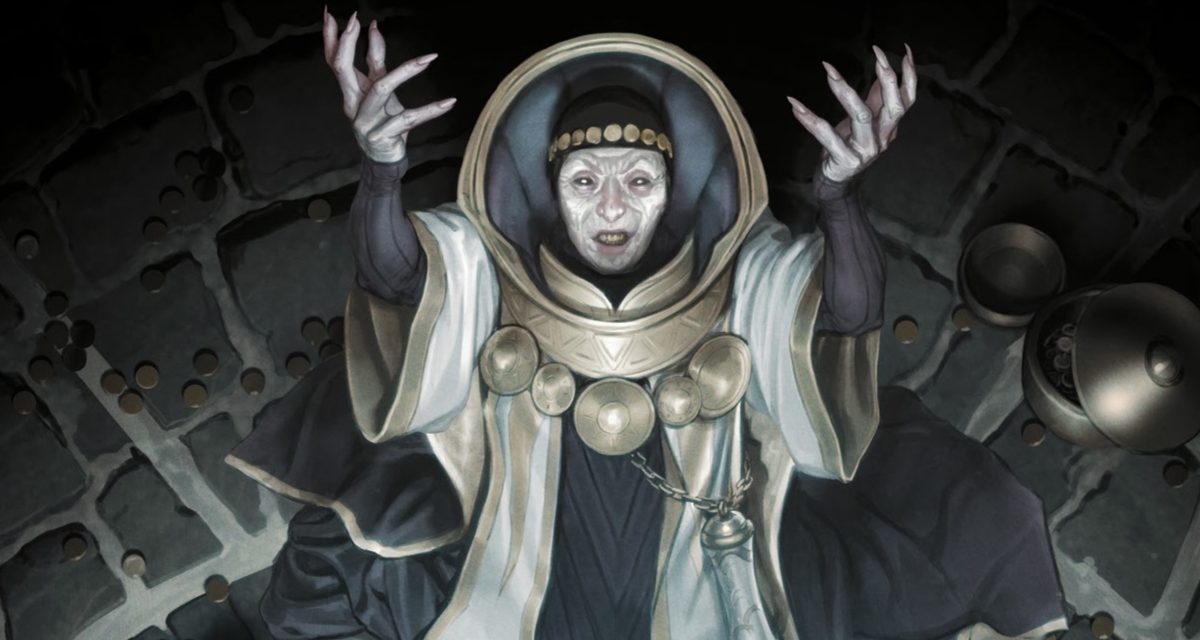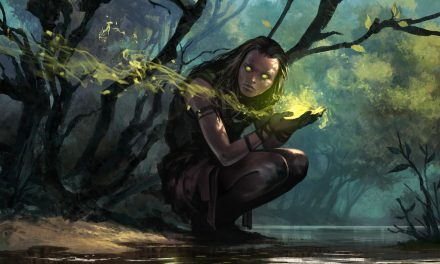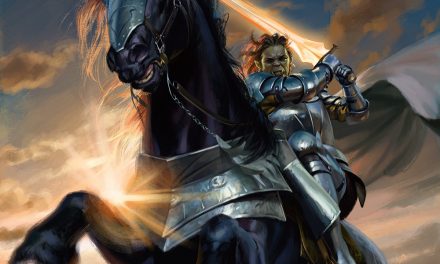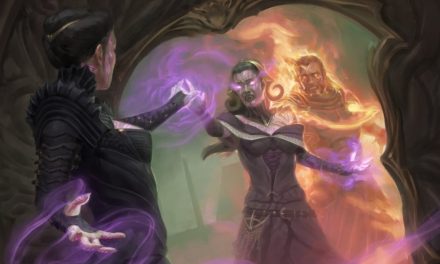Regardless of what Divine Domain they choose, most Clerics exist as a beacon of hope to those around them. They commonly provide healing, guidance, and protection in service to their deity.
But the Death Domain reveres a different type of deity. They offer prayers to and do the bidding of some of the most wicked and feared entities imaginable.
Today we turn to the dark side of faith and Divine magic. If we seek to understand it, we may fear it less. But will you be seduced by this domain’s promises of power?
Only time will tell…
This is the full subclass guide to the Death Cleric in D&D 5e!
What is the Death Cleric in D&D 5e?
The Death Cleric is tucked away within the pages of the Dungeon Master’s Guide.
Primarily meant for villainous NPCs, there is still enough information on the Death Domain for it to be a potential subclass for your Cleric.
Death Clerics are dark and grim priests who worship deities so evil that their names are rarely even spoken. These deities preside over domains of death, pain, suffering, poisons, and other such grim areas.
Deities worshipped by Death Clerics include:
- Myrkul (God of death)
- Bane (God of fear and tyranny)
- Wee Jas (Goddess of magic, death, and vanity)
- Iuz (God of pain and oppression)
Death Clerics put a heavy focus on magic that corrupts and destroys life as well as the negative energy that causes the undead to rise from their graves.
Is it any wonder that Death Clerics aren’t exactly the life of the party?
Because this puts Death Clerics in the same category as necromancers, liches, mummy lords, and Death Knights, they certainly favor evil alignments.
Lawful Evil and Neutral Evil are the most common alignments for Death Clerics. However, you could possibly make a case for Chaotic or Neutral alignments.
An Important Distinction
It’s easy to get Death Clerics confused with Grave Clerics. However, despite working within similar themes, the two are actually remarkably different from each other.
Death Clerics wish to corrupt and extinguish life. They have no issues with corrupting graves to raise undead servants and are certainly happy to turn their undead armies against innocents.
In fact, it would probably be more fitting to call them Undeath Clerics.
Grave Clerics, on the other hand, have reverence for death as a natural part of the cycle of life. They don’t fear death and their understanding of it allows them to be compassionate shoulders for others who have lost someone.
What’s more, Grave Clerics have nothing but resentment for the undead and those who create them. Animating a corpse defiles the body, corrupts the soul, and disrupts the natural order of life and death.
While Death Clerics spread darkness and doom, Grave Clerics lead with compassion and seek balance.
If you want to play a character that works with the theme of death but don’t want to be evil, I’d recommend checking out my full guide to the Grave Cleric!
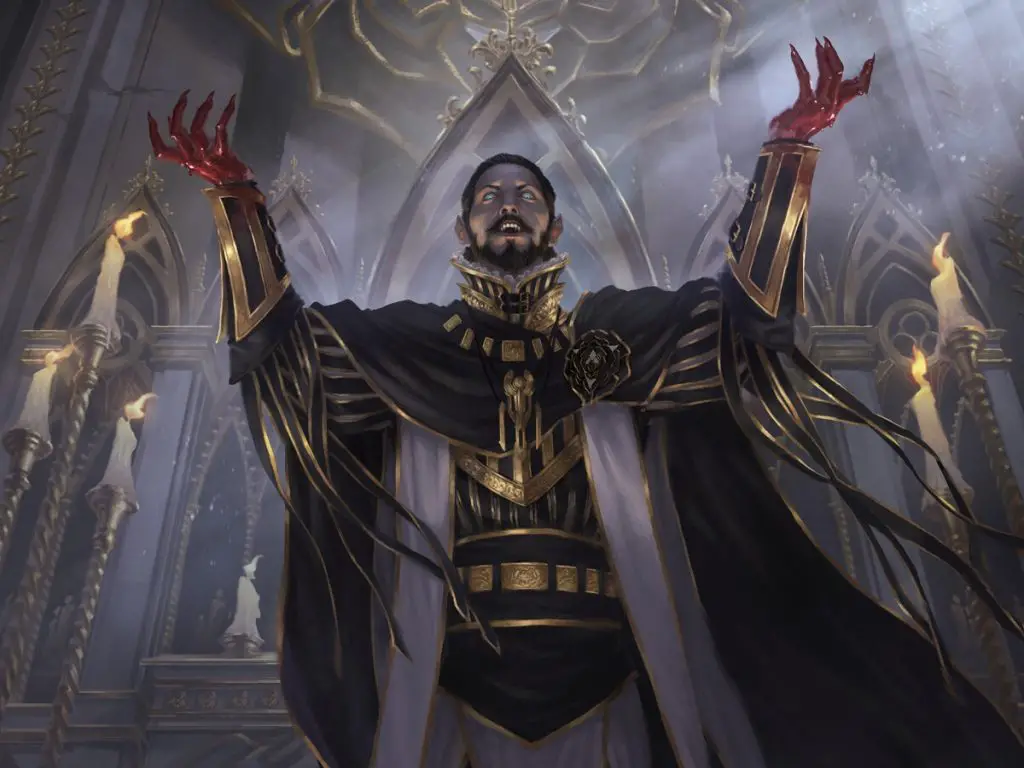
Role in the Party
Death Clerics don’t get any special features to help them support their party or offer extra utility. Any buffs or utility spells will need to come from the Cleric’s spell list or standard class features.
Death Clerics are powerful offensive characters who can easily combine dark magic with melee combat.
As such, they do best when positioning themselves on the front or midlines in combat.
If you can pick up proficiency with Heavy Armor, they can be powerful front-line damage dealers for the party. Otherwise, focusing on your spells while keeping towards the middle of the party will be your best bet.
Lock your enemies down with debuffs then take your pick if you want to punish them with spells or a good old-fashioned beatdown!
Death Cleric Features 5e
All in all, the Death Cleric has a fairly solid spread of features and abilities.
Most of the features you gain from the Death Domain will fit into one of two camps. They either incentivize you to move toward the front line or buff your spellcasting.
As you probably guessed, necrotic damage is going to be a heavy focus with this subclass.
But let’s take a closer look at the Death Cleric’s unique features.
Recommended: Turn Undead & Destroy Undead in D&D 5e Explained
Death Domain Spells
Every Divine Domain (Cleric subclass) also comes with its own unique list of bonus spells. These are called Domain Spells.
You gain these Domain Spells when you hit the level on the table below. These spells are considered to always be prepared for you and they don’t count against the number of spells you can prepare each day.
Some Domain Spell lists might include spells that aren’t normally on the Cleric spell list. In these cases, the spell counts as a Cleric spell for you and uses your Wisdom modifier as the spellcasting ability.
So, let’s check out what you get for choosing the Death Domain!
| Cleric Level | Domain Spells |
| 1 | False Life, Ray of Sickness |
| 3 | Blindness/Deafness, Ray of Enfeeblement |
| 5 | Animate Dead, Vampiric Touch |
| 7 | Blight, Death Ward |
| 9 | Antilife Shell, Cloudkill |
Thoughts on the Death Cleric Spell List
All in all, Death Clerics get a solid spell list with many good options.
False Life is an excellent self-buff spell that you will get great use out of throughout your adventuring career. Just be sure to check out my article explaining how temporary hit points work!
At low levels, Ray of Sickness isn’t bad. Higher Wisdom means you’re more likely to hit and they’ll have a higher spell save DC to contend with. You’ll outgrow this in the mid-levels though and poison is commonly resisted.
Blindness/Deafness can be very impactful but remember that the target makes a saving throw each round. Ray of Enfeeblement is dicey. It’s a nice debuff, but those it’s most effective against will likely have little difficulty beating the save.
Considering that making undead allies is a huge part of the Death Cleric’s schtick, Animate Dead is a no-brainer. You’ll be using it a lot.
Most Clerics don’t get Vampiric Touch, so it’s a nice addition to this spell list that lets you steal some hit points from your enemies.
Even though “death” is in the name, Death Ward feels out of place on the Death Cleric’s spell list. But it’s an excellent spell to have nevertheless.
Blight hits reasonably hard, but it’s best used against plant creatures which tend to be less common at this level. It’s good if you encounter something like a Corpse Flower, though!
When you need to go on the defensive, Antilife Shell is extremely handy to have. Keep melee enemies away from you and mow them down with your spells!
Used strategically, Cloudkill can be devastating but it’s not the most reliable of spells. Enemy Constitution saves tend to be high, poison is commonly resisted, and you need to really nail its positioning.
Bonus Proficiency (Level 1)
Extra proficiencies never hurts!
You gain proficiency with Martial weapons.
Gaining proficiency with martial weapons means you can have more options available to you. You’ll be able to deal a bit more damage with a longsword and every little bit does help.
You’ll realistically be throwing more spells than engaging melee combat since you won’t be gaining an Extra Attack. But it’s nice to have the extra options.
If you’re feeling spicy, grabbing a weapon with Reach like a halberd might help you play “keep away” with enemies a bit better. However, this does come at the cost of the bonus to your Armor Class from using a shield.
There are plenty of ways to build your Death Cleric and having proficiency with martial weapons makes it much easier to carve out your role in the party!
Reaper (Level 1)
As a Death Cleric, you’ve got a major focus on necromancy magic. Shocking, right?
So, it only makes sense that you’re going to get stronger (and creepier) right out the gate at level 1!
You learn one necromancy cantrip of your choice from any spell list.
When you cast a necromancy cantrip that normally targets only one creature, the spell can instead target two creatures within range and within 5 feet of each other.
In other words, you’re gaining Chill Touch.
Thankfully, it’s a great cantrip that tends to be pretty sorely underrated. While there really aren’t many necromancy options that you don’t already get as a Cleric, this is a very reliable one.
You’ll deal more damage with Toll the Dead (which is already on the Cleric spell list), but the range is better with Chill Touch.
If you can catch two enemies next to each other, use whatever is appropriate for the range. Especially when you’re squeezing through claustrophobic dungeons, you’ll be surprised how often you get to use this!
When they’re closer, use Toll the Dead. If they’re more than 60 feet away, use Chill Touch.
Channel Divinity: Touch of Death (Level 2)
If there’s one thing the Death Cleric loves, it’s any opportunity to put out more necrotic damage!
Using your Channel Divinity and calling upon your deity for aid, your very touch becomes even more lethal.
When you hit a creature with a melee attack, you can use Channel Divinity to deal extra necrotic damage to the target. The damage equals 5 + twice your Cleric level.
I love features that scale and grow alongside you. As you continue to take more levels in the Death Cleric, this becomes more and more potent.
When you first get this, you’ll be adding an extra 9 damage to an attack. That’s respectable and I’m not one to knock features that give you extra damage output.
But a level 20 Death Cleric is adding a whopping 45 points of necrotic damage on top of their attack!
Mixing this with the fact that you’ll get more uses of Channel Divinity per short or long rest as you level up means you can pump out a ton of extra damage throughout a standard adventuring day.
Note that the Death Cleric’s Touch of Death does work with your Spiritual Weapon! It’s a great way to add some extra “oomph” to those attacks!
Furthermore, Touch of Death works with other melee spell attacks such as Vampiric Touch and Inflict Wounds!
(Yes, a melee spell attack still counts as a melee attack for the purpose of activating Touch of Death according to designer Jeremy Crawford.)
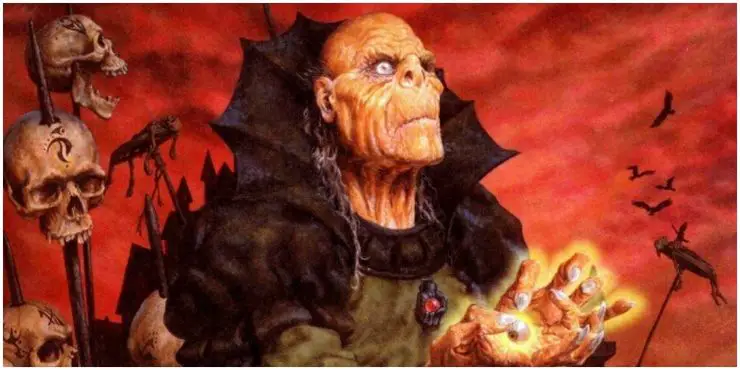
Inescapable Destruction (Level 6)
All in all, necrotic damage tends to be fairly reliable in most cases. But for a Death Cleric as devout as you are at level 6, even most undead can’t resist your necrotic damage!
Necrotic damage dealt by your Cleric spells and Channel Divinity ignores resistance to necrotic damage.
It’s important to note that resistance and immunity are not the same.
Very few enemies are immune to necrotic damage. Mummies, Demiliches, and incorporeal enemies like Banshees, Specters, and Ghosts, for example, are immune.
Inescapable Destruction does not overcome immunity but it does overcome resistance. Thankfully, resistance is much more common.
In the rare situations where your necrotic damage just isn’t working, you’ve got plenty of other options on the Cleric’s spell list to get you through the encounter safely.
Divine Strike (Level 8)
So maybe you won’t be getting an Extra Attack as a Death Cleric, but you can always just hit the enemy harder!
Once on each of your turns when you hit a creature with a weapon attack, you can cause the attack to deal an extra 1d8 necrotic damage to the target.
When you reach level 14, the extra damage increases to 2d8.
Peppering some extra necrotic damage that increases as you level up keeps you viable in melee combat.
You’ve got fewer chances to hit, but when you do land a hit, the enemy will be feeling the pain for the rest of their (likely very short) life!
Improved Reaper (Level 17)
Being able to double up on necromancy spells is incredibly useful. Used tactically, it’s a very efficient use of your spell slots!
When you cast a necromancy spell of level 1 through 5 that targets only one creature, the spell can instead target two creatures within range and within 5 feet of each other.
If the spell requires material components, you must provide them for each target.
The toughest thing about Improved Reaper is that the two enemies have to be right next to each other. That can sometimes be difficult to set up.
But much like I mentioned when talking about the level 1 Reaper feature, you’ll probably be surprised at how often this works out for you.
There are some incredibly useful necromancy spells that really benefit from the Improved Reaper feature. Inflict Wounds is a fun one, doubling on Vampiric Touch can restore a very nice chunk of hit points, and Blight can now drop some big-boy damage of 16d8 between two enemies!
Also, note that this works very well with your False Life spell!
Not only will you be giving yourself extra hit points, but you can also bolster someone standing next to you! Temporary hit points are always nice to have and even Death Clerics should know that sharing is caring!
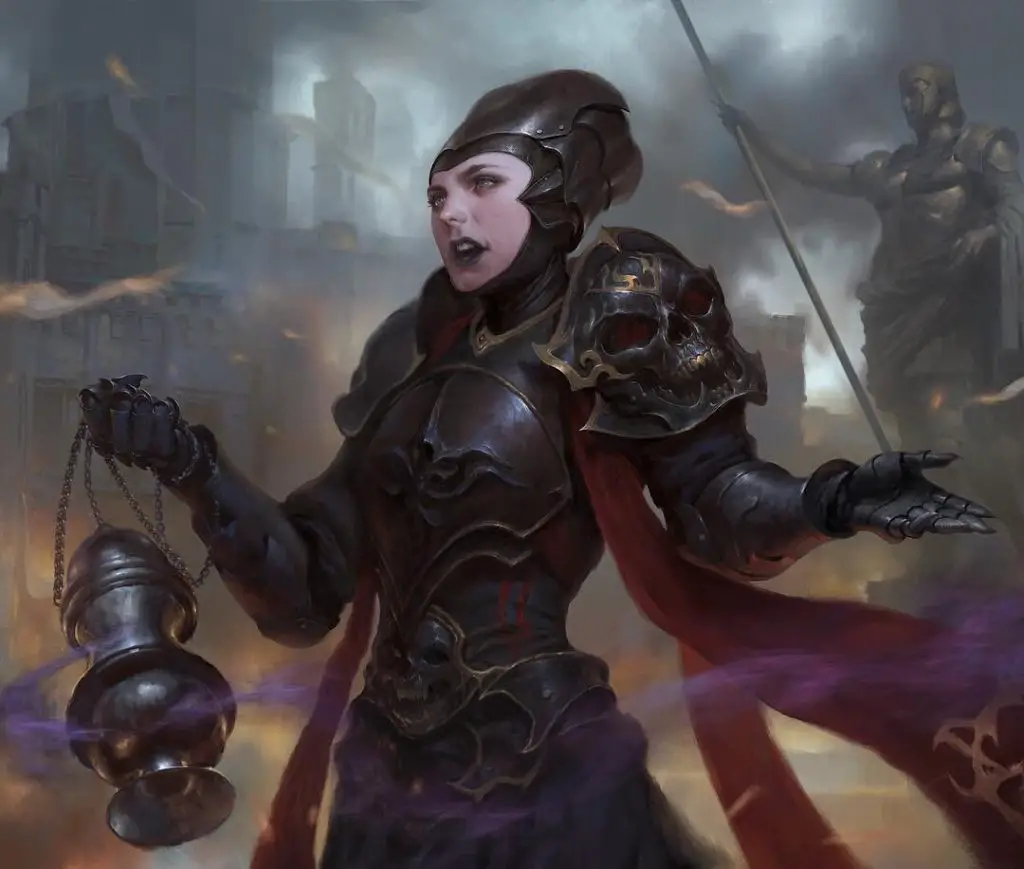
Connections
So now that we’ve gone over the nuts and bolts of the Death Domain, let’s look at how you might connect a Death Cleric with your party and campaign.
First things first, you want to consider that Death Clerics won’t fit in with every campaign. The Death Cleric is a lot like the Oathbreaker Paladin in that they are both really meant primarily for villains.
You will want to check with your Dungeon Master to make sure that a Death Cleric will work for the adventure. With some finesse, you might be able to work together to make it work in a way that makes sense.
But if you’re DM says it’s cool, there are a few angles you can take to better flesh out the character.
Nobody just wakes up one day and says, “you know what? I think I’m gonna have my morning coffee then pop down to the temple and start praying to the gods of tyranny, death, and suffering!”
Whether true or not, there must be some kind of enticing promise that pulled your character toward the Death Domain. What was it?
My mind immediately goes towards thinking about the Sith in Star Wars.
Characters like Count Dooku or Chancellor/Emperor Palpatine were ultimately motivated to the Dark Side by their hunger for power. It happened gradually and spiraled deeper and deeper.
Perhaps a Death Cleric grew tired of something in their life or world?
Unsatisfied with the response or lack thereof from the more “favored” deities in the land, they began to turn to the less favored names for help.
Such a character might believe themselves to still be good with the idea that their end goal justifies whatever terrible means it takes to get there.
Is the Death Cleric Good?
As I said, the spread of features and abilities offered by the Death Domain is pretty solid. Nothing necessarily jumps out or greatly reimagines the Cleric class, but it’s decent overall.
Even with Inescapable Destruction helping you get around necrotic resistance, I’m personally a little shy about focusing on a single damage type with my characters.
It’s definitely thematic, but certain encounters can leave you feeling fairly useless if your necrotic damage isn’t working.
While you’ve got other spells to choose from, it can feel like looking at a huge steak dinner but having to eat the peas first. Meanwhile, the steak is getting cold…
The biggest issue with the Death Cleric is that they take time to really get going.
Once you’re in the mid (and especially the high) levels, the Death Cleric really hits its stride. Until that time comes, however, there’s not a ton of value in the lower levels for this subclass.
Especially considering the legwork that goes into making a Death Cleric work with a party in the first place, I tend to think this subclass is best left to villainous NPCs in most cases.
Related: Check out my ranking of every Cleric subclass in D&D 5e!
Conclusion – Death Cleric in D&D 5e
I hope you’ve found this guide to the Death Cleric in D&D 5e helpful!
Got ideas for how to make a Death Cleric work in your group/campaign? Let’s chat in the comments!
Want all the latest player guides, DM tips, reviews, news, and more for D&D 5e straight to your inbox? Sign up for the Tabletop Joab newsletter below!
You can also follow me on Facebook and Twitter.
If you found this article helpful and want to support the site, you can buy me a coffee here! (It’s not expected, but very appreciated!)

